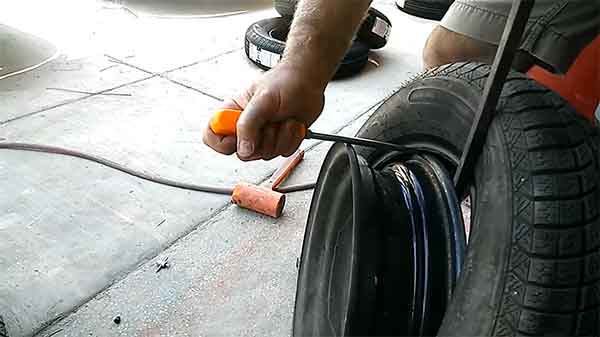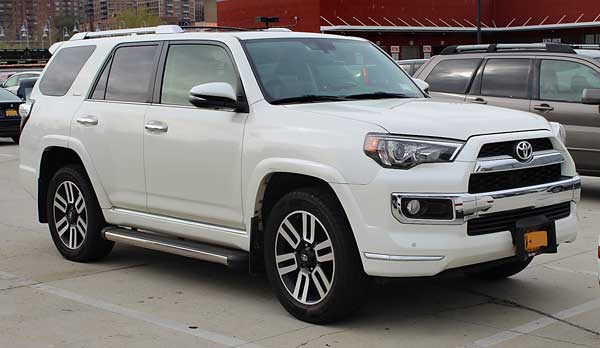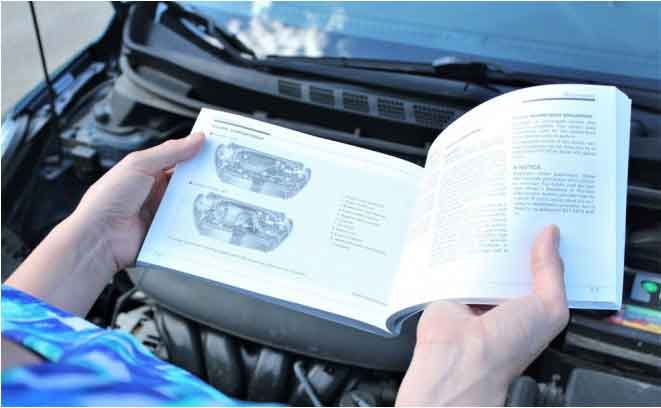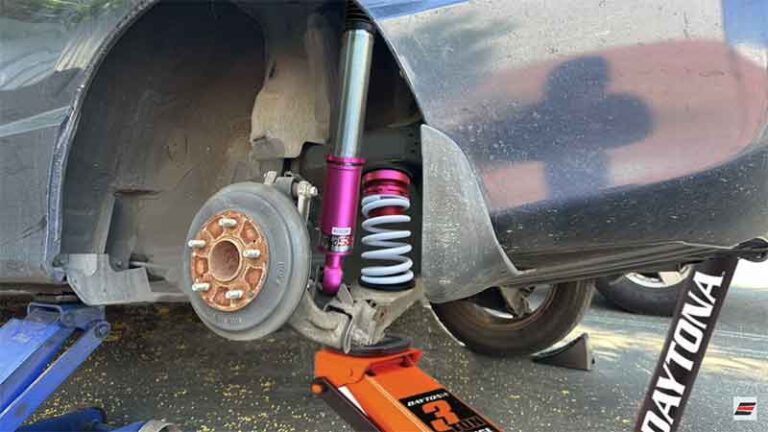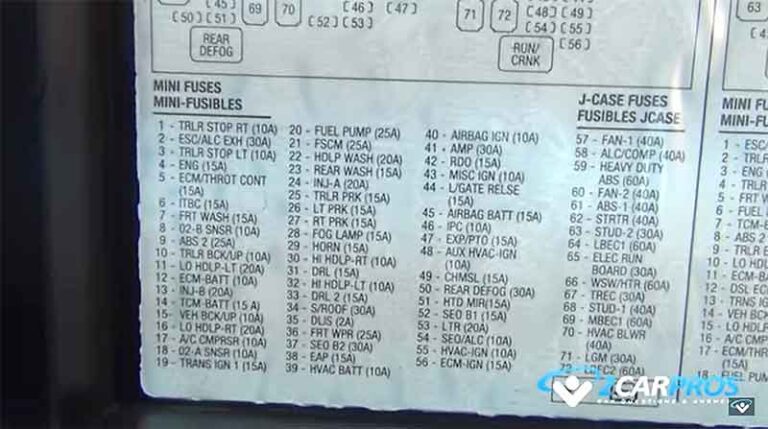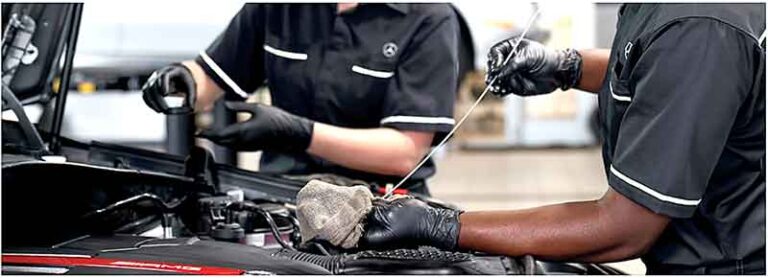Can I Drive With A Smoking Battery: Understanding Risks And Best Practices Of Driving Safely
Is it safe to use a car if the battery emits smoke? Driving with a smoking battery poses significant safety risks and functional issues that need to be addressed immediately. If a smoking battery is found on the road, it can pose potential hazards, fire hazards and impair the performance of the vehicle 25This situation requires a comprehensive investigation if the associated risks are emphasized it is very important to emphasize safety precautions.
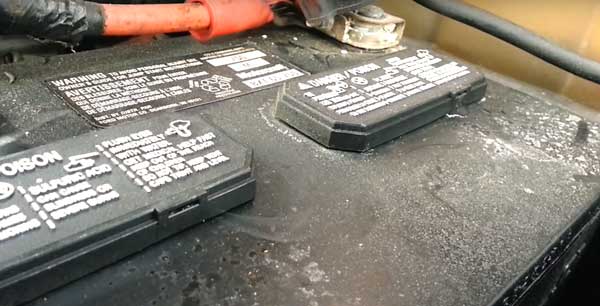
Photo: Smoke break out from a car battery
Addressing the implications of battery while driving includes understanding potential hazards, taking necessary safety precautions to reduce risks, and determining the appropriate steps to take they are made in the face of such a dire situation Strategy exists in decisive actions.
Understanding Common Causes of Smoking Battery
When a car battery emits smoke, it generally indicates a fault in its electrical system, which can be caused by a variety of factors. Overcharging, shorting, cell damage, or overheating due to aging or debris can cause this dangerous phenomenon Smoking batteries emit and can give off a distinctive foul odor visible smoke or vapors, creating a potentially dangerous situation.
Below are the causes of car battery smoke:
- Overcharging: Smoking in car batteries is usually the result of overcharging. The overload creates excessive internal pressure, which causes smoke to escape. This excessive pressure releases toxic and flammable gases that appear to be explosive.
- Alternator problems: Alternator problems can cause overcharging, similar to a malfunctioning charger. If the voltage regulator does not work properly, it can blow the battery past the safe limit of 13.7 – 14.7 volts, causing smoke
- Overheating: Smoking can also occur due to overheating batteries, especially in hot weather or tropical environments. The high temperature causes the electrolytes in the battery to freeze, producing smoke and fog until the electricity in the battery is completely discharged
- Dead batteries: A burning battery can be an indication of damage, especially if it has not been changed for a long time. Even though he managed to start the car one last time, smoking means he has failed completely.
- Connection problems: A poor connection or a short circuit can cause the battery to smoke. Some communication problems can be mitigated by ensuring terminals are tightly shielded, reducing the risk of a short circuit. Contact between positive and negative plates can also trigger smoking due to communication problems.
Understanding these common causes can help identify smoking problems in car batteries and take necessary preventive measures to avoid potential hazards
Risks Associated with Driving a Vehicle with a Smoking Battery
A smoking battery in a car poses a multi-faceted hazard that goes beyond just a smokescreen. Originally flagged as a fire hazard, the smoke produced can harbor flammable materials or gases, increasing the chances of a vehicle fire Also, smoke from a failed battery malfunctioning can produce toxic fumes and contain large amounts of harmful chemicals or gases produced, which can cause respiratory problems or other health problems.
In addition to the immediate danger of fire and health, a smoking battery is a sign of an electrical fault in the vehicle Continued operation under such conditions may result in electrocution existing problems have worsened, causing additional damage to the system. This increasing damage can lead to permanent failure of the vehicle’s electrical system or, worse, to other hazards while driving, compromising the safety of the vehicle and its occupants.
Prompt handling of a smoking battery is essential to minimize these interrelated risks, and to ensure proper operation of the vehicle and the safety of all occupants.
Safety Measures and Best Practices
- Pull over immediately: If smoke or burning odors emanate from the battery or electrical parts of the vehicle, this is an important precaution for drivers in order to stay safe and prevent a more dangerous outcome. This is not just a suggestion but an important safety precaution.
- Drive safely to the side of the road: It is important for the vehicle to recognize these signs and drive safely to the side of the road. When the engine is turned off, it energizes the inefficient components. Avoid rushing the hood as it can allow oxygen to enter, which could ignite a fire.
- Emergency Power: Immediately remove all occupants from the vehicle after towing to ensure everyone’s safety and to avoid injury from open fires or other electrical problems. Move to a safe area to avoid possible explosions or overflows.
- Communicate with emergency responders: Communicating with emergency responders is key if needed. Their expertise and resources are invaluable in dealing with potentially dangerous situations involving vehicle fires or electrical faults.
- Leave the repair to the professionals: Trying to solve the problem yourself is dangerous. Leave inspections and repairs to personnel with the necessary training and expertise to safely handle hazardous situations.
- Avoid restarting the vehicle: If you notice smoke or electricity, avoid attempting to restart the vehicle. Doing so could make the problem worse, causing a fire or other damage.
- Seek professional assistance: Contact a qualified mechanic or roadside assistance service. These professionals can diagnose the problem and take appropriate actions to safely and safely repair or replace it.
- Prioritize safety measures: Respond quickly to signs of burning smoke or odors from vehicle batteries or electrical components, prioritize safety, and rely on professional assistance. This step can prevent life-threatening situations and further harm or damage.
Legal Implications and Driving Regulations
Driving a vehicle that poses a fire hazard or is unsafe due to a smoking battery is a serious violation of road safety laws in many places such negligence poses a danger not to the driver and passengers not only on but also other road users. Authorities introduce drastic measures to deal with such disasters, often with serious consequences. Penalties, penalties, or legal consequences can be imposed on individual drivers for obvious safety concerns.
Furthermore, negligence in handling these dangerous situations compounds the legal ramifications should an accident occur. In addition to possible financial penalties, individuals may also face legal action, including damage, injury or death resulting from accidents Compliance with vehicle safety standards is not only a legal obligation but it is also the important responsibility of those who share the roads to ensure the welfare of themselves and others.
Preventive Measures to Avoid Battery Issues While Driving
Regular vehicle maintenance plays an important role in ensuring that it operates smoothly and is safe on the road. The key to this maintenance is to actively check the condition of the battery, ensure the integrity of the power cords, and replace them in a timely manner These proactive measures are important because they reduce chance to encounter a smoking battery while driving high. In addition to routine inspections by experienced engineers, potential issues can be identified and addressed before they are turned into hazardous situations.
Continuous Battery Monitoring:
- Visual inspection: Regularly inspect the battery cables and cables for wear or corrosion.
- Securely securing the battery: Ensure that the battery is securely secured with no loose connections.
- Cleaning: Use a mixture of baking soda and water to clean rust ends.
- Water level: For sealed lead-acid free batteries, check water level as needed and fill with distilled water.
Proper charging:
- Follow the instructions: Follow the manufacturer’s charging instructions to avoid overcharging or undercharging.
- Proper charger: Use a charger that has the right capacity for your battery.
- Avoid fast charging: Stay away from chargers that exceed the recommended range.
- Disconnect when the battery is fully charged: Prevent excessive charging by disconnecting the battery when it is fully charged.
Electrical System Analysis:
- Component inspection: Periodically check the alternator, starter and voltage regulator for proper operation.
- Check wiring: Look for loose or cracked wires that could cause electrical faults.
Overheating Considerations:
- Warm weather tip: Park in shaded areas and use shaded windshields to reduce exposure to direct sunlight. Consider a battery insulation kit for temperature control.
- Cold weather tip: Make sure you have enough cold cranking amps (CCA) for your climate. Use a battery blanket or heater in extreme cold. Limit long-distance driving to avoid unnecessary charges.
Such initial life not only guarantees longevity and efficiency of the vehicle but also provides both driver and passenger safety and thus a conscientious commitment to periodic maintenance acts as a preventive shield, preventing potential hazards related to battery and electrical system malfunctions, and is safe Enhances the driving experience.
Prioritizing Safety and Preventive Measures for Safer Driving
Using a smoking battery poses a serious risk to individuals in the vehicle and fellow road users. Smoke coming from the battery indicates potential faults or underlying issues that can quickly escalate, leading to serious consequences. Recognizing telltale signs such as an unusual smell or smoke from a smoking battery is paramount to protecting yourself and others on the road Take safety precautions including stop driving immediately, seek professional help, proceed with necessary actions to reduce potential hazards.
Additionally, proactive measures such as routine backup maintenance programs provide mechanisms to prevent battery-related issues. Regular inspections and maintenance can eliminate potential hazards, and ensure a smooth and safe journey for all passengers. Erring on the side of safety in smoking uncertainty batteries is important by prioritizing safety and quickly intervening personnel to support Keeping safety as a primary concern protects well-being and encourages healthy driving on the road.

